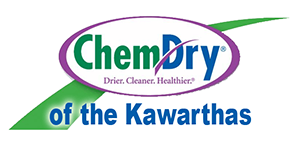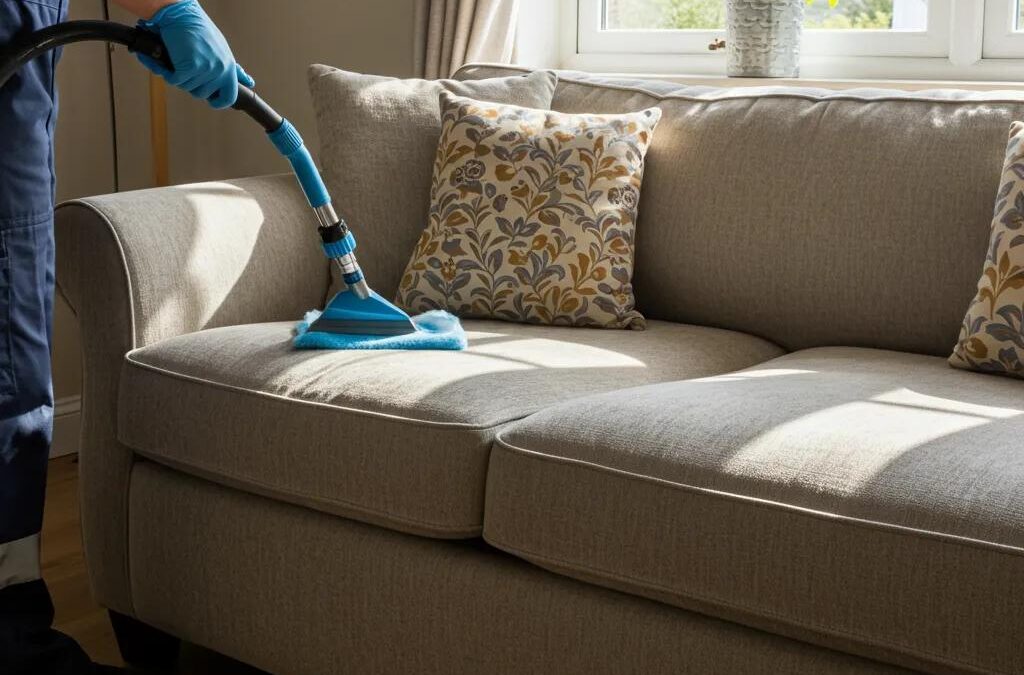Professional upholstery cleaning employs advanced, low-moisture extraction techniques to banish deep-seated dirt, allergens, and odors without over-saturating fabrics. Excessive moisture can trap residues and encourage mold, so methods like carbonating extraction provide a healthier, quicker-drying clean. In this comprehensive upholstery cleaning guide, you’ll uncover top professional processes, practical at-home maintenance, deep-cleaning protocols, how to book expert services, post-clean care advice, solutions for tough stains and smells, and essential fabric care codes. By combining professional techniques with homeowner tips, you can keep your furniture looking its best and ensure a safer indoor environment.
What Are the Best Professional Upholstery Cleaning Methods for Home Use?
Professional upholstery cleaning methods combine specialized equipment, expertly trained technicians, and eco-friendly solutions for a deep, hygienic clean. These approaches are crucial for high-traffic furniture, delicate materials, or households with allergy concerns where standard detergents and water simply won’t suffice. For instance, carbonating extraction utilizes millions of tiny CO₂ bubbles to lift dirt particles to the surface, leaving fibers virtually dry within hours.
How Does Chem-Dry Kawarthas Hot Carbonating Extraction (HCE) Process Work?

Hot Carbonating Extraction (HCE) applies a pressurized carbonated solution mixed with The Natural® cleaning formula to break the bond between upholstery fibers and embedded soils. As the warm, effervescent mixture penetrates, carbonation agitates and lifts debris while The Natural® dissolves grease without leaving any soapy residue. A powerful, low-moisture wand then extracts the emulsified dirt and moisture, reducing dampness by up to 80 percent compared to traditional steam cleaning. This process ensures furniture dries in two to four hours, minimizing downtime and preventing mold growth.
What Are the Benefits of Using The Natural® Green-Certified Cleaning Solution?
The Natural® solution is crafted without phosphates, fragrances, or harsh chemicals, making it safe for children, pets, and individuals with allergies. Its plant-derived surfactants target oils and grime at the molecular level, then rinse away cleanly without leaving sticky residues that attract new dirt. Independent testing confirms The Natural® removes common household allergens while preserving fabric integrity and color vibrancy. By avoiding soap-based detergents, this green-certified cleaner promotes healthier indoor air quality and extends the life of your upholstery.
How Does Professional Cleaning Compare to Traditional Steam Cleaning?
Steam cleaning relies on high-temperature water to break down soils, but excess moisture often penetrates deep into cushions, extending drying times and increasing the risk of microbial growth. In contrast, HCE uses ⅓ the amount of moisture, speeding up drying and reducing mold risk. This comparison highlights that HCE’s effervescent mechanism delivers a deeper clean with faster results and less risk of microbial issues.
| Feature | Hot Carbonating Extraction (HCE) | Traditional Steam Cleaning |
|---|---|---|
| Moisture Usage | Low (10–15% fiber saturation) | High (40–60% fiber saturation) |
| Average Drying Time | 2–4 hours | 12–24 hours |
| Residue Risk | Minimal (rinses clean) | Elevated (soap residue) |
| Allergen and Odor Removal | Advanced (carbonation lift) | Moderate (heat only) |
| Mold and Mildew Growth | Very Low | Higher risk |
Which Upholstery Fabrics Require Specialized Professional Cleaning?
Certain materials—such as silk, velvet, leather, and tightly woven microfiber—require customized cleaning methods to prevent shrinkage, color fading, or texture damage. Professionals assess each fabric’s cleaning code (W, S, WS, X) and fiber structure before selecting appropriate solvents, gentle agitation tools, and extraction settings. For example, leather upholstery often needs pH-balanced conditioners after cleaning to maintain its suppleness, while velvet might benefit from low-pressure carbonated spraying and vacuum extraction to protect its pile and nap.
What DIY Upholstery Cleaning Tips Can You Use at Home?

Homeowners can maintain upholstery freshness and tackle minor spots with safe, eco-friendly techniques, reducing the need for intensive professional services. Regular vacuuming and prompt spot treatment prevent soil from embedding and limit odor buildup. For instance, blotting spills immediately with a microfiber cloth stops liquids from penetrating deeper layers.
What Are the Step-by-Step Basics for Maintaining Upholstery at Home?
Daily and weekly maintenance routines help preserve fabric appearance and indoor air quality.
- Vacuum every 7–10 days using upholstery attachments to lift dust and pet dander.
- Rotate cushions and flip seat pads monthly to ensure even wear.
- Blot spills immediately—never rub—to prevent stains from setting.
- Air out furniture by opening windows or using a fan to dissipate trapped moisture.
These straightforward steps contribute to cleaner fibers and reduce the frequency of deep cleaning.
How Can You Effectively Remove Common Upholstery Stains Yourself?
For spot stains, follow this four-step approach:
- Test any cleaner on an inconspicuous area to confirm colorfastness.
- Gently blot the stain with a white cloth to absorb excess moisture.
- Apply a mild solution (one teaspoon of dish soap per cup of warm water) or club soda for beverage stains.
- Rinse by dabbing with a damp cloth and allow to air-dry.
This method addresses common stains like coffee, juice, grease, and pet accidents without over-wetting cushions.
Professional Upholstery Cleaning Techniques and Stain Remediation and paddings, the professional upholstery cleaner must adapt techniques to the item being treated… Stain remediation on these types of items may prove infeasible. Certain stain removal procedures can be attempted…EC86-418 Upholstered Furniture Care: Cleaning and Stain Removal,
Which Natural and Eco-Friendly Upholstery Cleaners Are Safe for Home Use?
Home-based solutions offer plant-derived cleaning power without synthetic fragrances.
- White vinegar diluted 1:1 with water neutralizes odors and light stains.
- Baking soda sprinkled on upholstery and vacuumed after 30 minutes absorbs oils and smells.
- Club soda effectively lifts beverage and wine stains when blotted promptly.
Always test on a hidden seam first and ensure good ventilation during application.
What Are the Limitations of DIY Upholstery Cleaning?
DIY methods are great for surface refreshing but can’t remove deeply embedded soils, pet allergens, or persistent odors. Overusing water-based cleaners can oversaturate padding, leading to mildew. Stubborn stains, set-in pet accidents, and heavily soiled areas often require professional-grade carbonating methods and green-certified solutions to restore both appearance and hygiene.
How Do You Deep Clean a Couch Professionally and at Home?
Deep cleaning addresses accumulated grime, oils, and irritants that vacuuming and spot treatments miss. This process revitalizes fabric breathability and helps prevent odors from returning. A professional or thorough home cleaning session can restore fiber resilience and extend your upholstery’s lifespan.
What Are the Signs That Your Couch Needs a Professional Deep Clean?
Fabrics that feel stiff, look dull, emit persistent odors, or show visible grime indicate it’s time for a deep clean. Allergy sufferers might notice increased symptoms around seating areas that trap dust mites. When cushions no longer bounce back fully or lingering dampness remains after exposure to moisture, professional extraction can reset the fiber condition and comfort.
How Can You Prepare Your Upholstery for Professional Cleaning?
Clearing clutter and removing fragile items ensures an efficient service visit.
- Vacuum cushions and crevices to remove loose debris.
- Mark any stains or areas of concern for the technician’s attention.
- Ensure clear access around furniture by moving tables and decorations.
- Note any fabric codes or previous damage to guide cleaning solutions.
These preparations allow for precise treatment and optimize cleaning time.
What Are the Steps Involved in a Professional Deep Cleaning Session?
A professional deep-cleaning process typically includes:
- Pre-inspection to identify fabric type, soil levels, and prior treatments.
- Gentle pre-conditioning spray to loosen oils and embedded dirt.
- Hot Carbonating Extraction passes that lift soils using carbonated micro-bubbles.
- Targeted stain and odor removal treatments, including specialized pet urine solutions.
- Low-moisture extraction and fiber grooming for a uniform appearance.
This systematic approach ensures a comprehensive restoration that goes beyond surface cleaning.
Upholstery Maintenance Manual: Cleaning and Particulate Accumulation Over time, the aesthetic quality of upholstered furniture can be diminished by the accumulation of particulate matter that is not effectively removed by routine vacuuming. In such instances, it may become necessary to address upholstery soiling through the application of suitable cleaning agents and equipment.
How Long Does Professional Upholstery Cleaning Take to Dry?
Drying times vary based on fiber density and room humidity but generally range from 2 to 6 hours after a low-moisture cleaning session. The use of powerful extraction tools and minimal water application allows for faster airflow through cushions. In cooler, less humid environments, fabrics can dry in under three hours, making furniture usable again by evening.
How Can You Find and Book Upholstery Cleaning Services Near You?
Locating a dependable upholstery cleaning provider involves assessing their cleaning methods, certifications, and local reputation. Choosing a service with consistent training standards and green-certified solutions ensures a deeper, healthier clean that aligns with your home’s safety and performance expectations.
What Should You Look for When Choosing a Professional Upholstery Cleaner?
Look for providers that:
- Utilize low-moisture extraction technology to prevent over-wetting and mold risks.
- Offer green-certified solutions free from phosphates, fragrances, and harsh chemicals.
- Hold industry accreditations and technician certifications for safe fabric handling.
- Provide transparent pricing, written guarantees, and clear pre-service instructions.
These criteria help homeowners secure a thorough, worry-free cleaning experience.
How Do You Request a Quote and Schedule a Chem-Dry Kawarthas Upholstery Cleaning?
To arrange a professional appointment, contact your local Chem-Dry Kawarthas franchise by phone or through their online form. Provide details about the number of seats, fabric types, and any specific concerns like pet odors or set-in stains. A technician will offer a preliminary estimate and confirm availability. On the service day, they will arrive equipped with HCE equipment and The Natural® solution, ready to restore your upholstery’s appearance and hygiene.
How Does Chem-Dry Kawarthas Local Franchise Model Ensure Quality Service?
Each Chem-Dry Kawarthas franchise operates under a unified training program and quality assurance system. Technicians receive ongoing education on advanced cleaning methods, safety protocols, and eco-friendly solutions. Local ownership combined with corporate support delivers personalized service while upholding global standards for performance and customer satisfaction.
How Can You Maintain Upholstery Cleanliness After Professional Cleaning?
Post-service care helps preserve the benefits of deep extraction, extending fabric life and reducing the need for frequent full cleanings. Regular upkeep maintains fiber resilience and indoor air quality.
What Are the Best Practices to Prolong Upholstery Cleanliness at Home?
Adopt these care habits:
- Vacuum weekly with HEPA-filtered attachments to capture allergens.
- Address spills immediately by blotting and applying a mild spot cleaner.
- Rotate cushions and pillows monthly for even wear.
- Use arm covers or throws in high-traffic areas to protect fabrics from oils and soils.
Consistent maintenance upholds professional-grade results.
How Often Should Upholstery Be Professionally Cleaned for Optimal Health?
For average households, a professional deep clean every 12 to 18 months strikes a balance between cleanliness and fabric preservation. Homes with pets, children, or allergy concerns benefit from six- to twelve-month intervals to manage dander, dust mites, and odor buildup. Regular scheduling ensures ongoing removal of irritants and prevents long-term fabric damage.
How Does Professional Cleaning Improve Indoor Air Quality and Allergy Control?
Deep extraction removes embedded dust mites, pet dander, and pollen that vacuuming alone misses. Eliminating these allergens from upholstery fibers reduces airborne particles and supports respiratory health. Certified low-moisture techniques prevent microbial growth, creating a cleaner environment for sensitive individuals and mitigating common allergy triggers.
What Are the Most Common Upholstery Problems and How Are They Professionally Treated?
Furniture accumulates spills, body oils, pet accidents, and environmental particles that can stain, create odors, and degrade fabric. Professional treatments combine targeted chemistry with low-moisture extraction to effectively restore appearance and hygiene.
How Do Professionals Remove Stubborn Stains and Odors from Upholstery?
Technicians begin with an enzyme-based pre-spray to break down organic compounds in food, wine, or pet messes. Next, specialized spotter solutions address tannin, protein, and oil stains without harming dyes. Carbonating extraction lifts emulsified soils, and targeted odor-neutralizing agents eliminate volatile compounds at their source. The outcome is fabric that looks, feels, and smells like new.
What Are the Health Risks of Neglecting Upholstery Cleaning?
Untreated upholstery can harbor dust mites, mold spores, and bacteria that may worsen allergies, asthma, and skin irritations. Accumulated body oils and food particles become breeding grounds for microbes, increasing indoor pollutant levels. Over time, these contaminants compromise air quality and contribute to respiratory discomfort and general household odors.
How Does Chem-Dry Kawarthas P.U.R.T.® Treatment Address Pet Urine Odors?
Chem-Dry Kawarthas P.U.R.T.® Treatment utilizes a series of enzymatic solutions that break down uric acid crystals deeply embedded in fibers and padding. After neutralization, low-moisture extraction flushes out waste molecules, followed by a final deodorizing spray that locks in freshness without harsh fragrances. This specialized protocol restores fabric hygiene and prevents odors from returning.
What Upholstery Fabric Types and Cleaning Codes Should You Know Before Cleaning?
Understanding fabric composition and cleaning codes helps prevent damage and ensures optimal results, whether you’re doing a DIY touch-up or hiring professionals.
How Do Cleaning Codes (W, S, WS, X) Affect Upholstery Cleaning Methods?
Cleaning codes guide the selection of solvents and moisture levels: (Water-based): Safe for water-soluble cleaners and low-moisture extraction. (Solvent-based): Requires hydrocarbon or dry-cleaning solvents to prevent water staining. (Water/Solvent): Compatible with both methods depending on the type of soil. (Vacuum only): Prohibits liquids; relies solely on dry vacuuming and light brushing.
Which Upholstery Fabrics Are Most Common and How Are They Professionally Cleaned?
Professionals frequently work with a variety of materials, including microfiber, chenille, cotton blends, linen, velvet, and leather. Microfiber often responds well to low-moisture carbonating extraction, while leather requires pH-neutral cleaners and post-cleaning conditioners. Velvet may need gentle agitation with soft bristles before extraction, and delicate natural fibers like linen benefit from solvent-based spot treatments followed by a gentle low-moisture rinse.
How Can You Identify Your Upholstery Fabric for Safe Cleaning?
Check manufacturer tags for fiber content and cleaning codes, and consult retailer care guides if tags are missing. Perform a test in an inconspicuous area with a damp white cloth to check for colorfastness. When in doubt, document the fabric’s appearance and code information and share it with cleaning professionals to ensure they use appropriate methods and protect your upholstery’s longevity.
Keeping your upholstery clean and vibrant involves a blend of expert techniques, homeowner diligence, and accurate fabric knowledge. By mastering these methods, you can enjoy healthier, longer-lasting furniture in your home.





